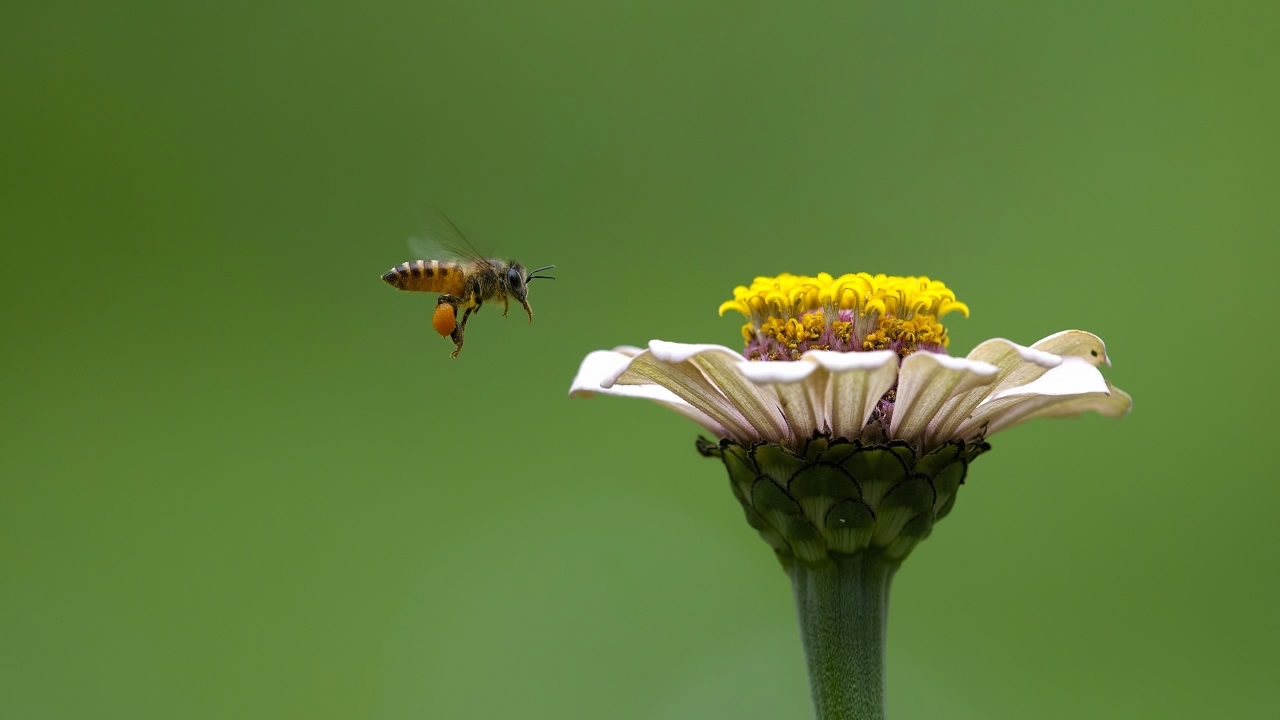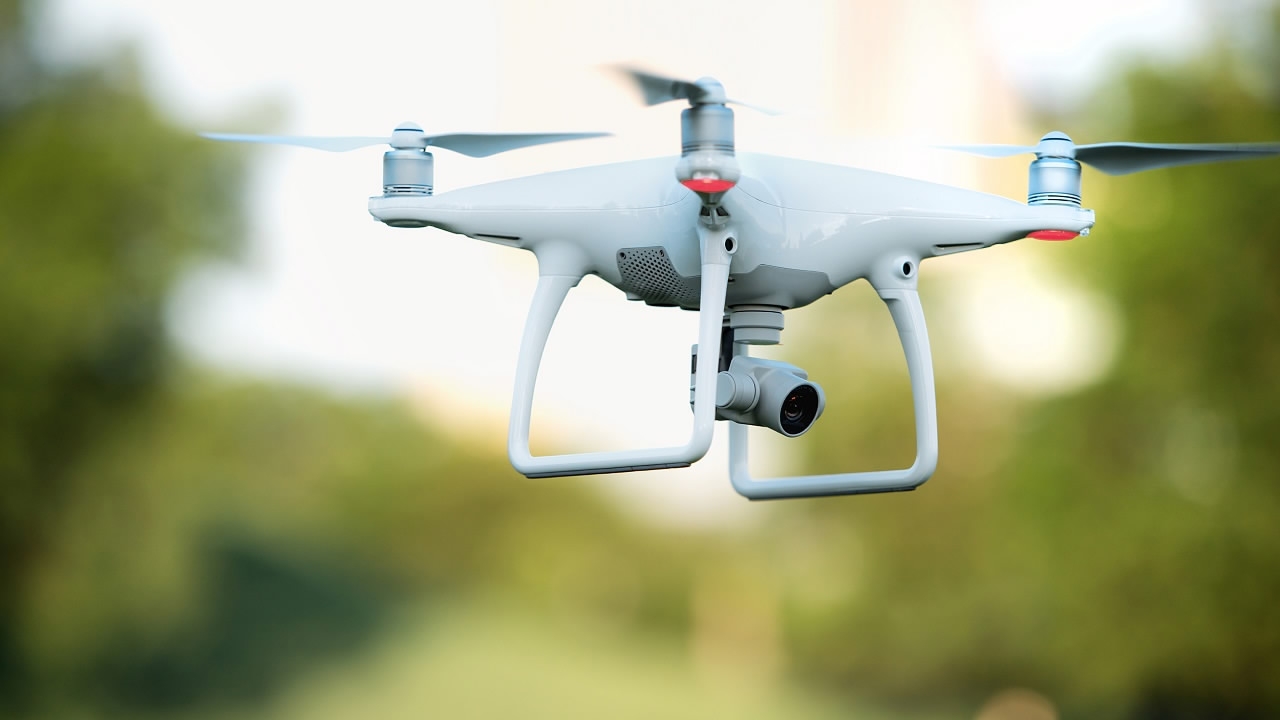Common bees could be the key to revolutionize the way robots and drones see the world.
According to an Australian study published on Tuesday, a human's ability to see color is heavily affected by changing light around them. Bees, however, are able to see the same color regardless by using three eyes on top of their head as well as their two main eyes.

Honey bee on water. /VCG Photo
Adrian Dyer, the lead author of a study into bee's vision published by the Royal Melbourne Institute of Technology University on Monday, said that the three eyes on top of a bee's head sample the light above them to detect the conditions.
"It means their brain knows what kind of lighting conditions they are in and then, when they are looking directly at a flower, they can say, 'Ah, it's a blue sky day, so the correct color should appear like this, or if it's a cloudy day it should appear like something else," Dyer told Australian media.

Honey bee flying to flower. /VCG Photo
Dyer believes that the discovery of how the three eyes work could solve the long-running problem of how to advance the technology that allows cameras, robots and drones to see the world.
"This is a very big problem for machine vision - how to make reliable decisions when the color of the light changes," Dyer said. By analyzing the process, researchers identified the mathematical formula used by a bee to process information, which can be programmed into a computer, gathered by the three eyes.

Drone in flight. /VCG Photo
They believe that drones plus "bee-vision" could have many practical applications, such as monitoring vegetation for ripeness and inspecting infrastructure.
"These ideas have been around for a while, but the problem has been how to judge color accurately," Dyer added.
Scientists from the University of Sheffield in England also conducted research last year to look at how bees use vision to detect the movement of the world around them and avoid crashes.
According to the study, bees control their flight using the speed of motion - or optic flow - of the visual world around them, but it is not known how they do this. The only neural circuits so far found in the insect brain can tell the direction of motion, not the speed.
This study suggests how motion-direction detecting circuits could be wired together to also detect motion-speed, which is crucial for controlling bees’ flight.

Robot walking towards man to serve beer. /VCG Photo
“Honey bees are excellent navigators and explorers, using vision extensively in these tasks, despite having a brain of only one million neurons,” said Dr Alex Cope, lead researcher on the paper.
“Understanding how bees avoid walls, and what information they can use to navigate, moves us closer to the development of efficient algorithms for navigation and routing, which would greatly enhance the performance of autonomous flying robotics”, he added.
(With input from Xinhua)
Related stories:









